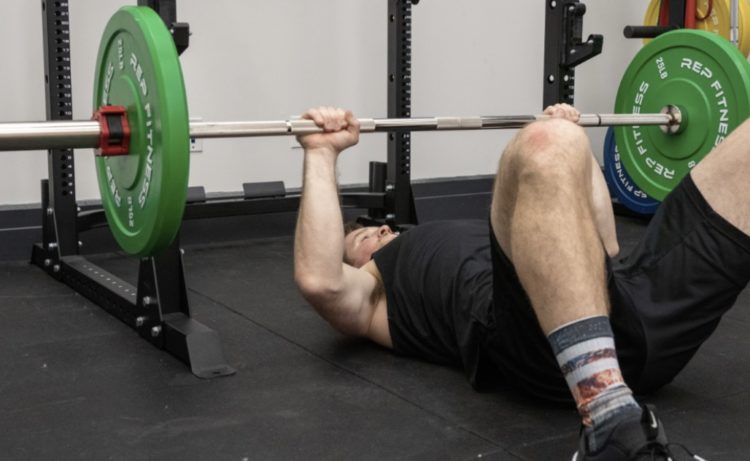The bench press is a rite of passage for most gym goers.
Even the newbies who know next to nothing about lifting always seem to know two exercises: the bench press and biceps curls.
And like the squat and deadlift, the barbell bench press allows you to move the most weight due to the relatively straight bar path. It’s hard not to fall in love with the gains.
Although it’s a fantastic upper body strength exercise that gives you bragging rights over your friends, it’s not always the friendliest exercise for the shoulders.
Due to the shoulder blades not being able to more freely (on the bench) and the barbell locking your shoulders into horizontal abduction and external rotation during the pressing motion, shoulder pain, particularly at the front of the shoulder, may flare up.
And while there are technique fixes and strengthening exercises that will help (that’s another article entirely), if shoulder pain is an issue for you, it’s possible that changing your press variations may help you continue to train the press without pain — so you can stay on the gain train.
Here are 4 movements to consider when the regular barbell bench press has your shoulders unhappy.
Editor’s note: The content on BarBend is meant to be informative in nature, but it shouldn’t take the place of advice and/or supervision from a medical professional. The opinions and articles on this site are not intended for use as diagnosis, prevention, and/or treatment of health problems. Speak with your physician if you have any concerns.
1. Barbell Floor Press
If you want to improve your numbers on the barbell bench press while saving your shoulders, consider the floor press.
As the sticking point for many lifters occurs at the midway point (about 6 to 8 inches off the chest) the floor press can help to improve your lockout strength. You receive no help from your lower body while pressing from the floor, and the reduced range of motion helps take some stress off the shoulders and put more emphasis on the triceps and chest. It’s a solid alternative to the regular barbell bench press.
Training suggestion
Because you’re already on the floor, pairing this exercise mobility or core exercise works well. For example:
1A. Barbell floor press: 6-12 reps
1B. Side plank: 5 breaths on each side
How to Floor Press
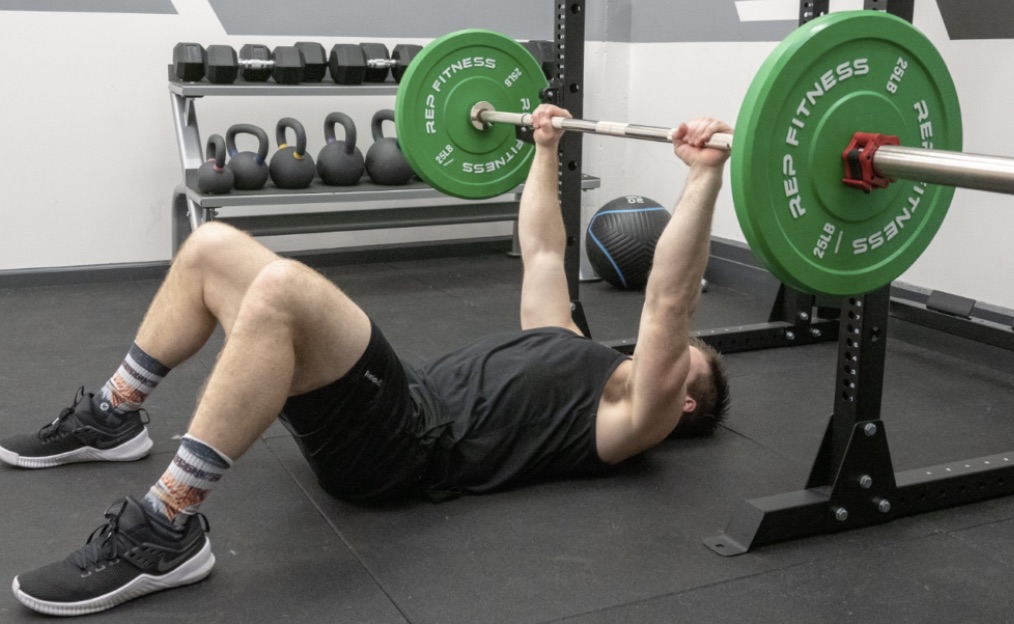
1.
Setup Underneath the Barbell
Start by positioning yourself on the floor underneath the barbell (eyes should be underneath). With the legs either straight or bent, be sure to place the feet, hips, and upper back on the floor, similar to that of a bench press.
Note, that this relationship with the floor is essential to the floor press. Often, individuals who struggle with this on a bench may find it easier to develop greater back tension in the floor press in the early learning phases.
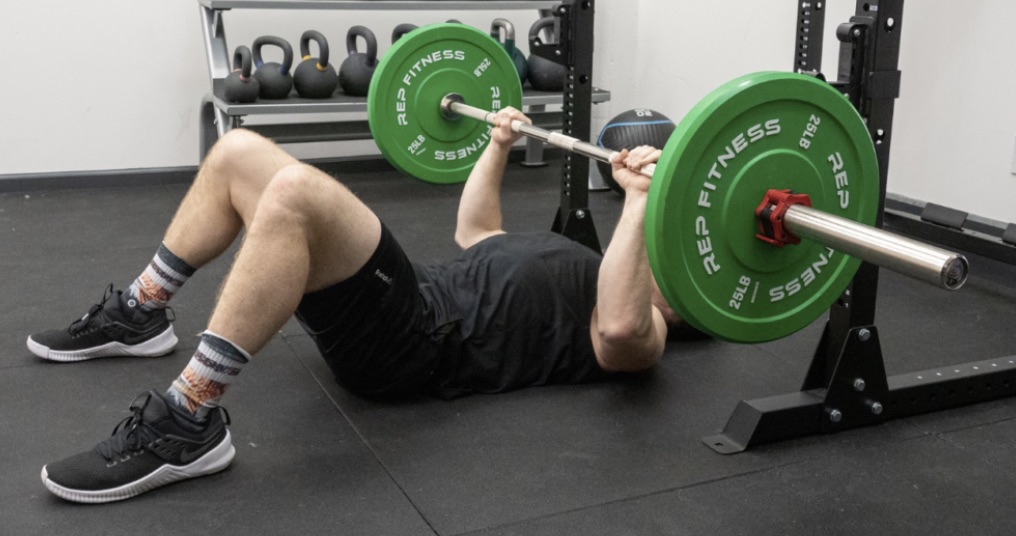
2.
Grip the Floor, Bring Elbows Downwards
With the body actively gripping the floor, firmly squeeze the barbell and pull the elbows down towards the torso, on a slight angle to ensure that the back muscles and posterior shoulders are being activated.
Be sure to pull the barbell to the base of the chest (just above the sternum) so that the elbows are roughly 45 degrees from the torso.
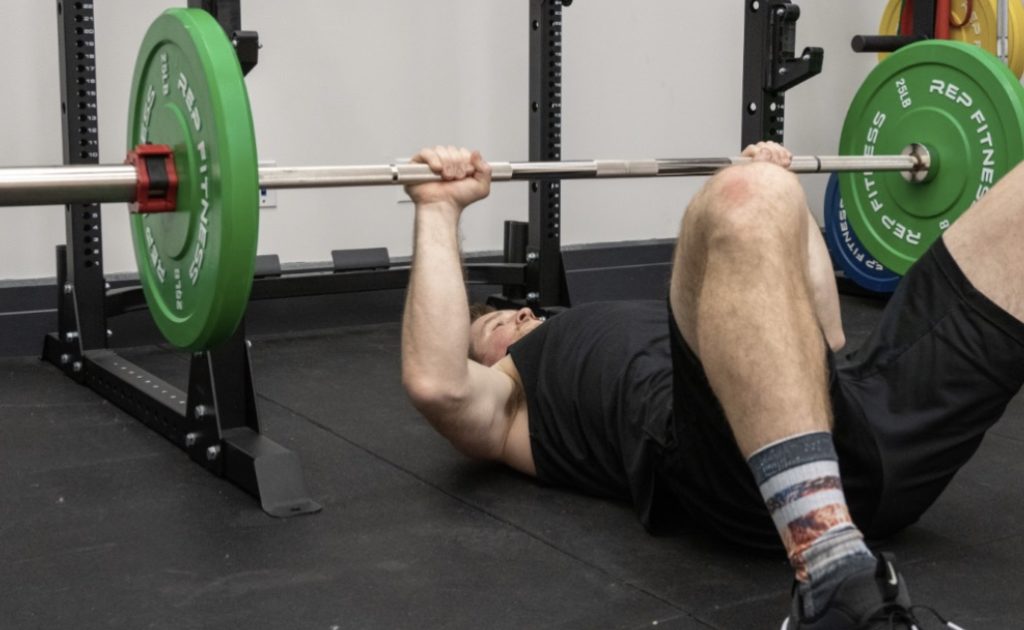
3.
Gently Contact the Floor, Then Press
Once you have gently made contact with the back of the elbows to the floor, remain in tension and reverse the movement so that you go into the concentric pressing phase of the floor press.
Note, that lifters can pause at the bottom of the press (which I prefer) to help increase stability, control, and gain a deeper understanding on how to develop and maintain tension and strength throughout the full lift.
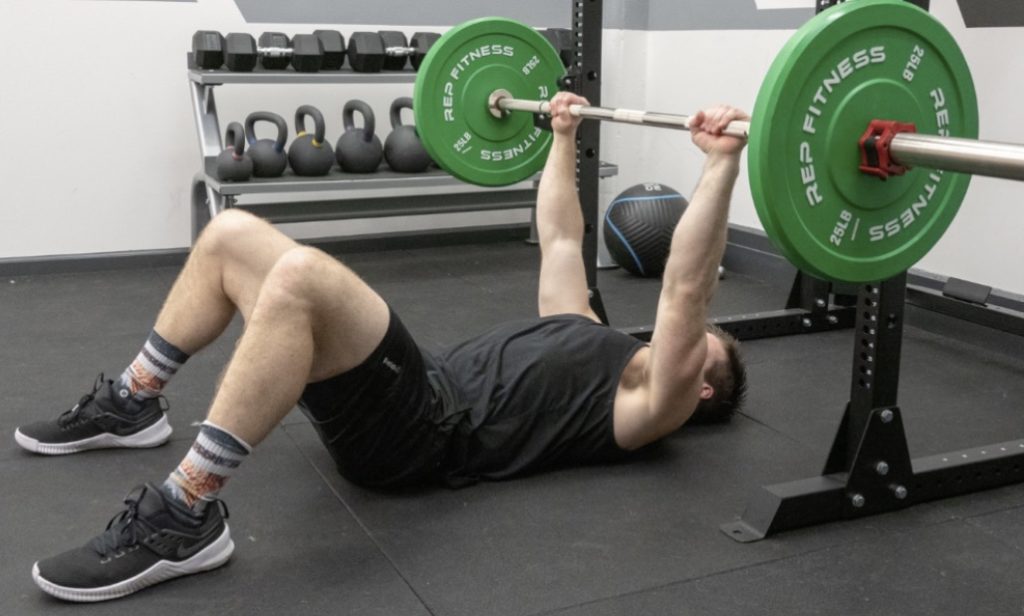
4.
Lock Out, Prep for Next Rep
Once you have returned to the top of the movement, repeat for the prescribed repetitions, rest, and repeat.
Make sure to not over protract at the top when completing a rep, as this could throw your positioning and base out of line.
[Related: Everything you need to know to perform the perfect floor press]
2. Single Arm Dumbbell Floor Press
Due to the offset load, the single arm floor press will turn on your core and shoulder stabilizers, areas that often get neglected from bilateral bench pressing.
Because it’s performed from the floor, again, it can be friendlier on shoulders because it eliminates the lower half of the press, where the shoulder is externally rotated and where bad things like shoulder impingement can occur.
If you’re shoulders are beat up, this is a great alternative to the barbell bench press.
Training suggestion
Pairing this exercise with another dumbbell floor exercise is perfect. What else are you going to do? Lie around and do nothing?
1A. Dumbbell floor press: 6-12 reps per side
1B. Renegade row: 6-8 reps
3. Barbell Board Press
This uses the same principle of the previous two exercises: shortening the range of motion eliminates the bottom of the movement where the shoulder gets externally rotated and the front of the shoulder travels forward, which can upset the biceps tendon.
Furthermore, the partial range of motion allows you to lift heavier loads (if your shoulders don’t hurt) since you’ve shortened the ROM.
And because of this, you can also zero in on sticking points. If you’re struggling at the middle of your press, use one to three boards at a time. If lockout strength is a problem, use four to five boards.
Training suggestion
As this is more of a strength move, pairing it with an exercise that doesn’t impede your recovery works well. For example:
1A. Board press: 3-6 reps
1B. Resistance band pull aparts: 10-15 reps
[Related: How to increase your bench without benching]
4. Decline Bench Press
There’s nothing in the bro by-laws that says you must always do flat bench presses. Changing the angle targets different parts of the chest and may help you press without pain.
The decline bench press can be less stressful on the shoulders, as the decline angle shifts the stress to your lower pectorals, which helps them to work harder and gives your anterior shoulder a break.
Training suggestion
The decline bench can be awkward to get in and out of because you’re doing a sit up to get in and out of it. So, super setting these two movements will give your abs some extra love. For example:
1A. Decline bench press: 6-12 reps
1B. Decline sit up: 8-15 reps
[Related: How to perform the perfect decline bench press]
Editor’s note: This article is an op-ed. The views expressed herein and in the video are the author’s and don’t necessarily reflect the views of BarBend. Claims, assertions, opinions, and quotes have been sourced exclusively by the author.
Wrapping Up
Limiting your range of motion and the angle of the press are two ways to keep pressing when your shoulder is unhappy. And as a bonus, you can zero in on sticking points and strength imbalances.
Finding ways to train around pain and not through pain is the key to continued gains and less pain. But no matter what you do, if you’re experiencing shoulder pain, make absolutely certain you see a medical practitioner before you continue training.
Bench Press and Shoulder Discomfort FAQs
Can I train bench press if my shoulders hurt?
That depends on the mechanism of discomfort and what’s causing it, but for general discomfort at the shoulder — yes, you can still train bench press variations.
Great bench press variations for training around shoulder discomfort will shift range of motion and how much stress the shoulder joint experiences.
Some great variations include: Floor press, dumbbell floor press, board press, and decline bench press.
Why do my shoulders hurt when I bench press?
There could be a number of reasons for shoulder discomfort during the bench press. Often times, discomfort stems from lack of proper positioning and form, along with other muscular imbalances.
For example, if your shoulder are heavily internally rotated, then you may experience pain in the front of the shoulders due to the acromioclavicular joints being put under excessive stress.
Again though, if you’re experiencing shoulder discomfort in the bench press, then a great first step is assessing form and setup.
